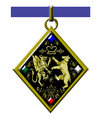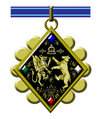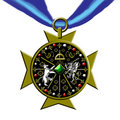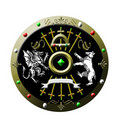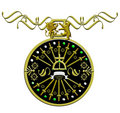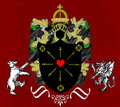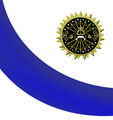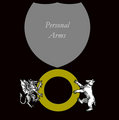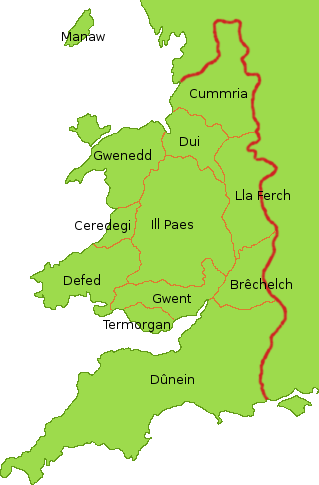Talk:Kemr
Flag proposal
(All discussions regarding the Kemrese flag have been moved to Talk:Kemr/Flag).
Folk Costume
I have moved it to its new page Cambrian Folk Costume
Headings
What about adding/converting proper MediaWiki headings in this article? That would make it easier both to navigate and edit. BPJ 10:15, 24 Jun 2005 (PDT)
Edited and it looks very nice for it. - andrew.
Brithenig / British
At the moment, the table lists "Kemrese" as the official language of Kemr, and Kerno, Brithenig and Brzhonecq as unofficial languages. Obviously, that's incorrect. But it touches a few interesting subjects.
- Is there a distinction (in English) between "Kemrese" and "Cambrian"? Do these exist at all?
- Obviously, Brithenig means "British". Is that what the speakers of B. call to their own language? What's the name of the language in English, then? Definitely not "British". Cambrian, perhaps? Or worse, Welsh?
- Breathanach means "British" too. How do the speakers of Brithenig call Breathanach in their own language? Would it perhaps be a suggestion to distinguish between Cambrian British (Brithenig Kemruis or something, Brithenig in short) and Scottish British (Brithenig Yscossuis???, Breathanach).
--IJzeren Jan 04:54, 19 Jul 2005 (PDT)
- General comments: You are right -- the table is incorrect. There is nó language called "Kemrese". "Brithenig" is the name of the chief language of Kemr -- and that's what all Kemrese call the language (when speaking in Brithenig). The English and Scots usually also refer to it as Brithenig, when being polite. When being intractable or bloody, they usually call it "Welsh". Calling it "Kemrese" has occasionally been an inadvertent error on the part of a couple of our merry band. Or, it could simply have been a lumping together of all the languages/dialects of Kemr, in the way we might speak of "German dialects".
- Specific answers: I think "Kemrese" ought to be changed to "Brithenig". Certainly "Brzhonecq" should be changed to "Brehonecq". Me, I don't think there is a difference between "Kemrese" and "Cambrian" in English. In Brithenig, of course, the matter is quite reversed: "Comroig" (or Cambrian) means an ethnically native north of the Severn Briton (i.e., exclusive of the Dûnein), whereas "Kemran" (or Kemrese) means anyone who is a citizen of the kingdom regardless of ethnicity (includes Indians, Americans, Dûnein, English, etc). I guess to the Bloody Saxon, anyone living to the left of the Fence is a bloomin Welshman. Let's just be thankful they've gotten over callem em "feckin Taffys"!
- Breathanach is probably called "Gwodaddein" or similar in Brithenig. I don't even know what the Comro call "Kerno". Apart from "ffuddyd !!$%^@$#!" Elemtilas
- I also think that Kerno and Manoeg shouldn't be called "official" languages. Brithenig is the national language, the language of government, education*, business, religion*, culture, etc, etc. I think the others should just be labelled "Other languages". Even though the language laws were overturned, I don't think they went all the way towards officialising all the minor dialects of the land!
- * -- The pyrrhic victory of the Dumnonians to get education done in Kerno throughout the Province is continuing to wreak havoc in local schools. Only now, it's the Bro-Comro (really a dialect of Paesan Brithenig) speaking youngsters who are being hurt.
- * -- Naturally, religion, in the guise of the British Catholic Church, is done up in Latin for the most part in the Province. Elsewise, it's done in Hindi, Hebrew, Gaulish, etc. Elemtilas
- I use Kemrese/Cambrian to refer to the kingdom of Cambria in its entirity, including Kerno and Man. Brithenig is the older name for the language of the Comro, the Brittanic language. Later I coined the phrase Comroig, the language of the Combrogi, the language of an ethnic group distinct to others in Cambria. The Kerno are called some variation of Cornovia after it's run through the GMP. Not certain of Breathanach.
Kerno and Manoeg are listed as official languages as languages of governance within their areas. The distinction of National vs. Official is borrowed from Switzerland (not Helvetia!) -- AndrewSmith 21:41, 20 Jul 2005 (PDT)
- Ah, OK. That makes some sense. Elemtilas
- Presumably Kerno would be Corneweg after GMPisation? I've never been sure on how Brithenig deals with -owj- Deiniol 18:21, 23 Jul 2005 (PDT)
- Makes sense. An alternative form for Kerno ìs Kernowack, which I think is more the original. Well, original when they weren't otherwise calling it Bret(h)aneck. Elemtilas
distinction of National vs. Official is borrowed from Switzerland (not Helvetia!) -- AndrewSmith 21:41, 20 Jul 2005 (PDT)
- Ah, OK. That makes some sense. Elemtilas
- Presumably Kerno would be Corneweg after GMPisation? I've never been sure on how Brithenig deals with -owj- Deiniol 18:21, 23 Jul 2005 (PDT)
- Makes sense. An alternative form for Kerno ìs Kernowack, which I think is more the original. Well, original when they weren't otherwise calling it Bret(h)aneck. Elemtilas
Provincial Flags
Also, I'd like to agitate for some provincial flags! Deiniol 16:28, 26 Sep 2005 (PDT)
- Just one advice to whoever decide to have a go. Based on british and european continental tendency, they should *not* contain the cambrian flag (like colonial ensign). Flags of older entities have a tendency to be banner of arms containing an original design.--Marc Pasquin 18:04, 26 Sep 2005 (PDT)
How about these?
Offered in hopes some one likes em. Zahir 18:52, 26 Sep 2005 (PDT)
- Are they based on some historical provincial welsh Coat of arms ? --Marc Pasquin 19:06, 26 Sep 2005 (PDT)
- Nope. Just some ideas I was playing with on photoshop. Zahir 19:37, 26 Sep 2005 (PDT)
- I'm not in charge of Kemr in any way, but I like them a lot! --IJzeren Jan 06:21, 6 Oct 2005 (PDT)
Thank you. I made some more, some suggested by actual Welsh heraldry. Zahir 07:25, 6 Oct 2005 (PDT)
Order of the Round Table
Some "rough drafts" as it were... Zahir 05:13, 6 Oct 2005 (PDT)
Oooooh! I thought the thumbnail pretty, and large image gorgeous! Complete with the colours of the Kemrese flag in inset stones too. I like the divisions from the 'table' you have set in the medalion (I can just hear some clever wit going 'and the big hand is on the twelve...)
- Not sure if it is clear that the divisions on Version Three are swords. I also suspect the dragon and bear should be larger. Hmmmmm... Zahir 21:48, 6 Oct 2005 (PDT)
- Now that I am aware that they are swords I can identify them as such - AndrewSmith
I think your last one is the best. I would only suggest to move the crown and scroll to the center (instead of the green jewel) so they do not cover some of the swords. I wouldn`t change the size of the bear & dragon so they don`t overpower the design. They could even be put on the outsite as part of the clasp instead.--Marc Pasquin 12:23, 8 October 2005 (PDT)
- You manage to make the fifth one even greater. Don't know about Andrew but it looks perfect to me. --Marc Pasquin 18:13, 8 October 2005 (PDT)
- I agree with Marc. This is a good insignia. The divisions show clearly, and none of the details are lost, with the bear and dragon moved to the top. - AndrewSmith
Cool! I was also creating a similar award of arms, to be etched onto a red and ermine cloak for certain ceremonial events. And I imagine another option would be a traditional star-and-ribbon. Yes? No? Maybe? Zahir 22:41, 8 October 2005 (PDT)
Yes! - AndrewSmith
For its members heraldic purpose, you might want to design something simpler, either an accessory or badge. for exemple, members of the order of the garter put a garter behind the shield . Many other orders simply allow their members to encircle their shield with the vestment or part of it (depending on their rank).
- Good idea. The above is intended as the arms of the Order itself, not an accessory badge for the individual members. Zahir 23:09, 9 October 2005 (PDT)
One thing that just occured to me, Who can receive the order of the round table ?--Marc Pasquin 18:07, 9 October 2005 (PDT)
- This is what I found out about membership in the Order of the Garter, which might be comparable:
- Today, the Order has returned to its original function as a mark of royal favour; Knights of the Garter are chosen personally by the Sovereign to honour those who have held public office, who have contributed in a particular way to national life or who have served the Sovereign personally.
- The number of knights is limited to 24 plus royal knights. For much of its history, the Garter was limited to the aristocracy, but today the knights are from varied backgrounds. Zahir 23:09, 9 October 2005 (PDT)
- The Order of the Round Table should be considered the Kemrese equivalent to the Order of the Garter. Virtually every European monarchy had an equivalent (gotta collect them all!) The number of members has not been confirmed yet. Members of the Order are referred to as 'Companions'. - AndrewSmith 02:36, 12 October 2005 (PDT)
I was very dissatisfied with my earlier version of the arms. So here is another try... 03:47, 12 August 2008 (UTC)
notes about Brithenig Folklore
ill pobl pog nîr - little dark folk - slim, small, longheaded
dyr es ill diwrn e ddyr es ill noeth, e ddyr cuid Arawn
The northern lights are called llys Dôn - the Court of Dôn, and the galaxy is called the Fort of Gwydion (not Caer Wydion).
In visiting holy wells, it is the custom to walk sunwise around the well x3
the word 'left' has the meaning of unlucky, unhappy.
'by the sun' - an oath a'll sul
bugun - like ghosts; any sudden noise.
The White Lady seems to be a revenant, generally with without a mission.
llewar di llo ddefon to summon devils, witchcraft, familiar spirits. The plural form is used for the summoning of demons (special word?)
Catholic priest are believed to have greated power over spirits then protestant clergy. ... Fairies are generally called the Fair Tribe. goblin is an introduced word. The Goblin, the mini-knocker, is well-disposed to humans.
Blanc ffeil Nuddent is the king of the Fairies.
Diwin - one who practises divination; also magic and sorcery.
suinar from (se:gnum) to charm.
3 types of congiurur exist (always men) - those who sell themselves to the devil; those who learn from books; and those who inherit the gift. The third kind are the best.
Cromwell 1658 Champion of Kemr.
Owain Lawgoch.
Bonfires at Winter Calends. Noeth Calen Ifern. When the fire had burnt out people would venture home before the black sow without a tail caught them. Indoors there is feasting and contests.
Winters Eve is one of the three Ghost Nights, llo thre h-Yspiridnoeth, along with summer's eve, and S. John's Eve. On these nights the spirits of the dead were seen. Food for the dead are given to the poor.
Going to church on Winter's Eve to hear the spirits call out the names of those who would die during the year. Candles are lit in church. Bright light good; spluttering ominous; going out bad. Three turns were taken around the church in silence, and the next day must not speak to anyone.
Death is a personification Angau/Angeu.
Demon from contra:rius dissimilated to contreil
nuptia;ria wedding feast nythieir (f)
Ariconium to Viroconium are known as Erchoin.
1574 bid for independence in Worcester.
Vaughn Williams. Darwin. Wedgewood.
- Blanc ffeil Nuddent - :D Did you keep all the stuff we discussed about Owain Lawgoch, by the way? Deiniol 08:44, 7 Oct 2005 (PDT)
- Maybe I'll make that Gwin ffeil Nuddent. I had a mental note to do that. The name sounds better as an Old Celtic carryover; and I like the fact that the fairy king is the son of the Elder God Nodens. This is an unedited text. If I have the stuff on Owain Lawgoch it's among email folders which are difficult to search. I vaguely remember we discussed him, but I have forgotten the details. You will have to remind me. - AndrewSmith
- I had wondered about how close Owain when to the Royal line. That looks about right. Is Duke Llewfelen the equivalent of Our Last Prince *here*? - AndrewSmith
- If I recall correctly, we discussed that while the Kemrese Royal line derived from Paternus (Padarn Beisrudd *here*), Paternus' grandson Counodagos (Cunedda Wledig) became Duke of Gwenedd, founding the Venedotian cadet line of the Royal House. I think the scenario I suggested was that Duke Llewfelen had been getting uppity and attempted a coup against the King, so the King exiled him and his family. And yes, I had Ein Llyw Olaf in mind when suggesting Duke Llewfelen. Deiniol 08:31, 12 October 2005 (PDT)
Archiving ?
I got this message: " This page is 30 kilobytes long; some browsers may have problems editing pages approaching or longer than 32kb. Please consider breaking the page into smaller sections."
Is archiving done only by moderator or can anyone do it ?--Marc Pasquin 15:43, 6 November 2005 (PST)
- Anyone can do it. The problem in this case is only that the bulk is about the Kemrese flag, and the item is still current. Okay, I'll give it a try. --IJzeren Jan 22:26, 6 November 2005 (PST)
Flag Proposal Identikit
(Moved to Talk:Kemr/Flag#Flag Proposal Identikit).
Padraic, Mon != Man
Mon I assume is Mona- or Anglesey in the vulgar tongue, not the Isle of Man! Deiniol 16:50, 3 March 2006 (PST)
- Ha! Tha's right. In any event, Mon isn't a province. It's part of Weneta, which is (blimey) I guess Gwenedd in Brithenig. Anyway, anything north of the Severn ain't all thát important, eh! Elemtilas 19:19, 3 March 2006 (PST)
- I've assumed Mon = Isle of Man in the past. Is there a different etymology between the islands? I've always thought the Kemrese called the northern autonomous province Mon. - AndrewSmith 23:10, 3 March 2006 (PST)
- Albert's Atlas of Classical History (a wonderful collection of Roman Empire maps) give Mona for Anglesey and Manavia for Man. Ptolemy doesn't show Anglesey at all on his map, but I dimly recall that it wasn't even really an island in those days. In any event, he has a "Mona" out in the middle of the Oceanus Hibernicus, which I'm assuming as Man. He also has two little largeish islands in Dundalk Bay (Lempnos and Adros, the former might actually correspond to Lambay I near Dublin?). He's also got a small flock of islands up north of Ireland, one of which is Monarina. Elemtilas 16:44, 4 March 2006 (PST)
- Personally, I always assumed that Anglesey and Man would have Brithenig names similar to the Welsh ones- Môn and Manaw, from Monā and Manaviā. Môn occupies a special place in the history of Wales *here*, being known as Mam Cymru "Mother of Wales". It was also the most sacred place for the pre-Roman druids and the location of their famous last stand against Suetonius. I wonder if it'd be as significant to Kemr? Deiniol 17:00, 4 March 2006 (PST)
- I would probably accept Mon and Manew in Brithenig. Whether Môn is 'Madr Kemr' to the Kemrese is not known to me. We know that modern Sessiwns include druids. - AndrewSmith 20:05, 4 March 2006 (PST).
A Kemrese Historical figure?
Any thoughts, Andrew or Padraic on what sort of a figure Boudica, Queen of the Iceni is in Kemr? BoArthur 12:13, 13 March 2006 (PST)
- A tragic hero of the great struggle to push the ruddy Saxon back into the sea from whence they came from. I suspect she's been the subject of movies, novels and the fantasies of many a Comro these past 20 centuries.
- She's certainly a figure that should make an appearance in Kemrese literature...will have to try and write some! Elemtilas 13:18, 13 March 2006 (PST)
- Remember that she was against the Romans...ante-dating the Saxons by some 500 years... BoArthur 13:24, 13 March 2006 (PST)
- How now! Let's not be messing about injecting actual FACT into the movies or sixpenny fantasy novels (with full colour, and impossibly full bosomed Buddeg on there with whatsisname's head on a pike)! Elemtilas 19:38, 13 March 2006 (PST)
- Phhhttt. Next thing you'll be telling me Davey Crockett didn't win the Battle of Gettysburg. Zahir 21:31, 13 March 2006 (PST)
- I do apologize, most esteemed gentlemen. ;) BoArthur
- a heroine of the Chomro, about as Kemrese as Asterix is French. Which inspires me wonder about a Kemrese leader starting a speech with "We, the Britons..." or "We, the Pridani..." As well as pride in Kemr's Roman heritage there is an anti-establishmentarianist tradition that cocks the nose at the authorities. Anarchy in the FK, and all that! This explains the druidic revival as well -- partly it's a reaction against stifling order and romanitas. - AndrewSmith 00:58, 15 March 2006 (PST).
Provincial Names
I've been thinking about the names of the Kemrese provinces, and, as far as I'm aware, on this map, they go like this:
- Gwent - Gwent
- Termorgan - Morgannwg
- Defed - Dyfed
- Ill Paes - Powys
- Lla Ferch - The Marches
- Gwenedd - Gwynedd
- Ceredegi - Ceredigion
- Cummria - Cumbria
The province Brêchelch is the only one of these that I don't get the origin of. Plus, in the article, the province Dui crops up (I assume, instead of Cummria).
Also, this map could be usefull. --Sikulu 06:04, 21 March 2006 (PST)
- Brêchelch is area between Gwent and Dûnein. The name means 'Limestone Hills'. Major cities are Glew, Ciren and *Bristol. An important province for shipping.
- Dui is about north-east Kemr, between Paes and Cummria. I don't think the map has been updated to include it. I guess on the historical map it is parts of Powys and Rheged. The provincial capital is Aberddui. - AndrewSmith 12:39, 23 March 2006 (PST)
- Looks about right to me. The old map was made before we were sure about what happened in the north. Could do with a couple more dotted lines, by the looks of things! I don't know how well "Cummria" fits with the GMP, though. After all, it is cognate with Cambria, and we all know that ended up as Kemr! *Kumr is about all that suggests itself, but that looks pretty *Krummy! ;) Elemtilas 18:28, 23 March 2006 (PST)
- I like the map. It reads more clearer to me than the older version. It could do with some more placenames :) I guess Terbrogaen would survive as the name of the locality of west Gwent. I can't speculate on Gwerthrynion and Builth as I've never gone looking for etymologies. I've never made a ruling on Cummria - it lies outside Kemr Byr which is my curacy. The name was applied on the province by Saxon invaders from their ethnic name, the Cumbrogi - ?Cumr, Cymr?. Maybe the Kemrese still officially call it Rheged. - AndrewSmith 19:52, 23 March 2006 (PST).
- Re the map- I'm willing to make something larger with some more placenames, particularly is Padraic's doing one for England (I traced his old map anyway). I enjoy mapmaking. Deiniol 05:36, 27 March 2006 (PST)
- As I recall, I think that the Cornovii and Brigantes lived around Rheged, as well as the Setantii. --Sikulu 00:54, 24 March 2006 (PST)
- I'll ferret out some etymologies this afternoon, I'm sure I have them among my resources somewhere. Deiniol
What is the word for "province"? Nik 21:47, 23 March 2006 (PST)
- Prowenc' or Prewinc from Provincia I assume. Deiniol 00:59, 24 March 2006 (PST)
- Prewync' has been floating around the back of my head for years now -- I've never needed to use the word so it's never been confirmed. - AndrewSmith.
Bristow
The old name for Bristol, but a bit unrealistic as a germanic name, no? What about Aquae Sulis? --13:31, 14 July 2006 (PDT)
- Padraic seems to be fond of retaining unwarranted Germanic names- there's still a Barnstaple and a Padstowe in Dumnonia. I've never asked him about it, but I've always assumed he knows what he's doing :D
- And Aquae Sulis is the name *there* for Bath, not Bristol. Deiniol 14:36, 14 July 2006 (PDT)
- Actually, I like "Bristow". Reminds me of one of my favourite TV series! :) —IJzeren Jan Uszkiełtu? 14:50, 14 July 2006 (PDT)
- Ah, now -- never assume I know what I'm doing! ;))) Bristow and Barnestaboel probably have non-Germanic etymologies *there*. And even if they don't, it might be that a Germanic name crept in during the wars with England. Aquaesulis regularly becomes Acouesoel in Kerno.
- Elemtilas 20:03, 14 July 2006 (PDT)
Some Comments on Provincial Names
Gwenedd
Gwynedd *here* is most likely from *Venedā or *Venidā. There's an attested Latin form as well - Venedotia - which in my opinion is a Latinisation of the Early Welsh *wenədo:ti:, which is simply the reflex of *Venedā with the derivational suffix *-ātis added on (which gives modern Welsh gwyndod- people from Gwynedd).
Termorgan
"Morgannwg" *here*, meaning Morgan's (< *Moricantos) Land. I would have expected the initial m- to lenite to f-, however as Latin terra ends in -a, Terforgan.
- Termorgan is a calque of Gwlad Morgan, which becomes Glamorgan in English. As Morgan is a possessive and not an adjective, I didn't soften it. In this case I was influenced by the English name. Do you think we should let it soak a bit longer? - AndrewSmith 20:32, 24 March 2006 (PST).
- Nah, on second thought you're most likely right. Besides Termorgan looks better than Terforgan. Deiniol
Lla Ferch
This one puzzles me rather. Clearly from "illa marca, why is the stem vowel -e- rather than -a-? Interesting that a Germanic word is used anyway- "marca" wasn't borrowed into Latin until the Carolingian period.
- This is an example of umlaut in Paesan that gets transfered to Brithenig proper. Presumably, the Old Paesan was something like *Lle Marce, which became Lle Ferch. Proper Brithenig, perhaps, wouldn't have been able to undrestand the distinction between March and Ferch, so the Marches is Lla Ferch. In Brithenig. It might still be Lle Ferch in Paesan.
- Perhaps it was originally connected with Celtic markâ, rather than Gmc. marca; though obviously it later took on the Gmc. meaning, so we might suppose that Brithenig lost the root marc- meaning "horse". Elemtilas 19:12, 24 March 2006 (PST)
- I took it from Anglo-Norman Latin, "Marchia Cambria" - AndrewSmith.
- That all makes sense.
"Cummria"
Cummria is in all likelihood incorrect- Cumbria is neither Latin nor English, but a Latinisation of "Cumber(land)", the English reflex of Proto-Brythonic or Early Welsh *kombrogjā. The word *kombrogjā is rather interesting and deserves a little bit more attention here. Clearly it gives "Cymru" *here* (well, technically *kombrogī gives "Cymru"). It wasn't the original self-designation of the Welsh- in the earliest recorded Welsh poems they called themselves Brythoniaid, Britons. "Cymry" was adopted later on- around 580 CE according to John Davies in Hanes Cymru. I have a vision *there* of the thoroughly Romanised and Latin-speaking aristocracy and middle classes appealing to the Brythonic-speaking peasants for solidarity against the Saxon foe by saying Ita emos snīs pāpī kombrogī! Thus we are all countrymen! in their own language while using a Latinisation of the term amongst themselves - Cambria - which gives modern Kemr.
- I think The Age of Arthur suggests it was used as a contrast to the invading Saxons -- Us vs. Not-Us. Apparently Gildas used cives. - AndrewSmith.
Anyway, back to the topic at hand. So "Cummria" is out. I reckon Andrew's right and that they'd still call the area "Rheged". As far as I'm aware, "Rheged" is from the personal name "Ricātos" (possibly in the genitive form Ricāti, elliptical for *Tīros Ricāti, Ricatos' Land). So it should be the same in Brithenig, or possibly Rhegeid.
- Approval/disapproval on this one? Deiniol
Ceredigi
Ceredigion *here* is named after Ceredig ap Cunedda. "Ceredig", as far as I'm aware is derived from "Carātācos"- so "the land of Carātācos" would either be Terra Carātāci or Carātācia in Latin, giving Tergaradeig' or Caradeig' in Brithenig. For what it's worth, the county town of Ceredigion *here* is called Cardigan in English but Aberteifi in Welsh. I think Teifi is from *Temīsa, but don't quote me on that.
- My map of Roman Britain doesn't list a Latin name for the Teifi unfortunately. - AndrewSmith.
- Ptolemy has something like Tefibio fl. in the region of the Teifi River, which comes out at Aberteifi / Cardigan *here*. Elemtilas 06:20, 25 March 2006 (PST)
Deiniol 04:59, 24 March 2006 (PST)
- Gwaith da iawn, Deiniol. I must admit not knowing about (most) of those name derivatives. --Sikulu 05:16, 24 March 2006 (PST)
Cummria
Can't we rename this province "Rheged" and merge it with Dui? Not only is Cummria a cognate of Kemr, but it's nowhere near our Cumbria!
Also, I think Cumberland county, whilst in England, should be part of Lancashire; minus the parts of Lancashire in Kemr, Lancashire is way too small to constitute a sensible royal dutchy and I think that Cumberland is also not a valid name for a county, being a cognate of Kemr also.
- Is it just a personal dislike for the region's name, Quentin? Things don't have to be completely analagous, *there* to *here*...Padraic? What's your take on this? Isn't Kemr at some level something you contribute to?BoArthur
- It looks like from above that both Deiniol and myself endorse the name Rheged. I don't endorse merging Dui and Rheged. The provinces look the right size to me and this would create another super-province like ill Paes. What I would like to see is a map of administrative centref for Kemr, to go smaller rather than bigger. - AndrewSmith 13:49, 14 August 2006 (PDT)
- I wasn't sure if you were still lurking or not! This is the man you should talk to about these things, Quentin. BoArthur 15:40, 14 August 2006 (PDT)
- No, I don't have a personal dislike to it. I would support Rheged though, even if not merged with Dui. Another thing that might be interesting is http://commons.wikimedia.org/wiki/Image:Britain_500_CE.png
- I'm still about, I'm busy at the moment with general procrastination, compiling a quarterly newsletter for my local Presbytery, working on a translation of the UN Declaration *here* into Brithenig (and maybe after that Foucault's Pendulum!) and gathering notes for an eclectic conlang. Life is hardly dull. It does mean I don't give Kemr the time it deserves. I have decided that the new contender for the Conservative Party has the surname Rhoengam, but I haven't given him a first name yet.
- Useful map, Quentin. If anything it suggests that Gwened and Dui should be merged rather than Dui and Rheged. Please remember to sign yourself, it avoids confusion. - AndrewSmith 21:15, 15 August 2006 (PDT)
- As to Cumberland, strictly speaking, the English part of *here's* Lancashire would be unlikely to seperated from it, since *here* it was formed from part of Yorkshire and Cheshire (see here. *There*, it would still be a part of Cumbria (the English one) when it seperated from Yorkshire (see here, and Lancaster would be a border city. --Sikulu 07:43, 15 August 2006 (PDT)
Forest of Dean
Is it in Gwent or Brechlech, and what is it called in Cambrian? --Quentin 00:31, 15 August 2006 (PDT)
- I need more information on its location and its etymology before I can make a ruling. - AndrewSmith
Oz/Uc
Should all those ozs in the postage prices be ucs? Or is oz also used for ounce? Does this predate SI? --Quentin 01:13, 1 September 2006 (PDT)
- We apparently got "oz" from Italian several centuries ago, where it was the abbreviation for onza. May still be the same *there*. In any event, "uc" is the standard SI abbreviation for the (official Latin) uncia. There's no reason why the English word wouldn't also have its abbreviation. Elemtilas 05:13, 10 October 2007 (PDT)
about cambrian priests
What would cambrian priest look like ? would they wear druid-like hooded robe or would they be influenced by the orthodox church and are tall conical hats. Is a beard mandatory ? I imagine they would wear a celtic cross around their neck. --Marc Pasquin 22:42, 7 October 2007 (PDT)
- A look at a couple of books I have on the Stowe Missal and Worship in the Church of Scotland suggests that Celtic priests dress in a style similar to the Western Church, although ornately decorated in a Celtic style (do a search for 'Cumdach' and you will get an idea). I think we can be freer than that in designing what a modern cambrian priest would wear as other influences can be introduced. - AndrewSmith 02:08, 9 October 2007 (PDT)
- Makes sense. On the mandatorial nature of beards, they may well be traditional if not actually required. Of course, the fundamental organisational unit of the Cambrian Catholic Church is the monestary, so there may well be considerable regional and local variation in such practices. In other words, you might be able to tell what region a priest monk is from based on the cut of (or lack of) his beard. What I think is generally mandatory is the tonsure. That's a typical badge of monastacism. The typical Celtic tonsure is ear to ear, though the Roman tonsure might also be seen. Other possibilities exist.Elemtilas 05:20, 10 October 2007 (PDT)
- I believe the Celtic monks wore white. So the stereotype of the cassocked (Celtic) priest would be a white monkshood, over an alb or similar, with a tonsure and beard, and Celtic cross. *Here* I know of only two clergy who wear full regalia: the priests of the Orthodox and Coptic churches: all others wear mufti. - AndrewSmith 00:37, 11 October 2007 (PDT)
- Makes sense. On the mandatorial nature of beards, they may well be traditional if not actually required. Of course, the fundamental organisational unit of the Cambrian Catholic Church is the monestary, so there may well be considerable regional and local variation in such practices. In other words, you might be able to tell what region a priest monk is from based on the cut of (or lack of) his beard. What I think is generally mandatory is the tonsure. That's a typical badge of monastacism. The typical Celtic tonsure is ear to ear, though the Roman tonsure might also be seen. Other possibilities exist.Elemtilas 05:20, 10 October 2007 (PDT)
Some Recent Developments
Enrhig Tewdur was Toisag of Kemr between 1529-1541. He came from one of the most powerful families in Kemr at that period and was groomed virtually from birth to become Abbot of St Davids, the second most important spiritual leader in the Cambriese Rite after the Patriarch. The Abbot is virtually the chaplain and preacher to the Royal Court. His abbacy is remembered for its anti-Lutheran policies culminating in his "Defence of Catholicism". As Toisag he channelled Kemrese troops into aiding the French in their wars against the Holy Roman Empire in 1536. This proved to be an unnecessary burden on the budget and led to his dismissal from office 5 years later.
Iewan Dui is now best remembered as a natural philosopher. In 1553 he was brought before the courts and imprisoned on the charge of conjury. On his release he left the kingdom and spent some time at the court of Rudolf II in Eastern Europe. He was chancellor of the university of Castreleon from 1595 until his death in 1608.
Oliweir Gwilelm was elected to the senate in 1629. He remained a senator for a number of years and eventually became Toisag in 1646. His appointment is remarkable for the fact that he was a member of a strict Protestant sect. The length and policies of his toisagship have not been assertained.
Current affairs note that the King has been in poor health recently. His grandson, Prince Pedr, the Duke of Cambria, represented the royal family in climbing the Peaks of Terforgaen on Calen Awst Sunday, an annual event. It is believed to be the first time in living memory that a senior member of the House of Padern has not attended this event. Pedr also accompanied Gereint XIII to the Calen Yfern mass eight days ago. Palace watchers are following this development closely as it contradicts an unwritten policy that Prince Pedr has maintained his independence from royal affairs, preferring to develop a career in the sciences. Until now his stubbornness has been respected by the King and his father, the late Prince Costenhin. Significantly Pedr has curtailed his lecturership at the University of Bangor for the next semester. The Duke has a partner and one child, a daughter, both have not been seen publically, but are believed to be residing within the Tyrdyr.
The rumour that Telefisiwn Comroig was going to get a known transvestite to play ill Peleirin has been confirmed as a prank.
Some possibilities for the Timeline
1846. King Francis I of England and Scotland inherits the title of Duke of Modena. For a brief period the Duchy is a British possession until it is united peaceably into Italy (1860?). The unification of Italy appears to have been a British enthusiasm.
During the first Great War, Prince Louis, the Duke of Edinburgh, declares himself to be a pretender for the throne of Bavaria. After the end of hostilities the claim is politely hushed up.
Also in 2002 the government announced a new internet service development for Castreleon. I don't think it can be wi-fi, as is happening *here*, so I would be interested if someone could advise me on it.
Death Penalty
Recent discussion of the Death Penalty in the NAL led me to discover this tidbit, written by John C.:
Nov. 10, 2002: I think that torture pretty much went out in IB with the 18th-19th century abolitions of slavery and serfdom throughout Europe and the European-influenced parts of the world. Roman law, the tradition of which was never broken in IB, always insisted that torturing freemen was impermissible. As for the death penalty, I suspect it's a patchy sort of thing. Kemr almost surely never had it; England definitely did. Beyond that I can't say.
Music
Without those ffuddyd Englishmen, might the crwth and Welsh triple harp have survived *there*? (Of course, the Welsh triple harp never quite died out, it just lost a lot of ground to the pedal harp is all) Juan Martin Velez Linares 00:54 22 September 2015 (CDT)
- I would suspect that the crwth will eventually give way to the fiddle and other suitably folksy instrumentations as time goes on. Musicians, *there* as indeed *here* will be called upon to perform the middle & upper crusty dance and pop music of the time -- for social dances and chamber concerts -- as much as common dance and pop music of the time. It seems to me the fiddle is a more versatile and agile instrument. Get one with five or six strings and you can do about anything you can do with a crwth.
- Now, there is still a strong tradition of bardic music in Kemr, so there may very well continue to be a place for the crwth. At least in certain settings. The triple harp I see no reason for that to disappear, it being quite agile and terribly traditional. I'm sure the leading harpers of the country will continue with the Kemrese harp even after the invention of all those fiddly pedals. Also, it has a distinct & clear sound that the later classical harp seems to lack. I think that will be appreciated whereas the crwth really doesn't sound a whole different from a fiddle. Elemtilas 06:01, 22 September 2015 (PDT)
Established Church
Is the Catholic Church established in Cambria? Or have they made like the Welsh *here* and thrown off the Pope's vile yoke? Juan Martin Velez Linares 14:59, 2/12/2016 CST








